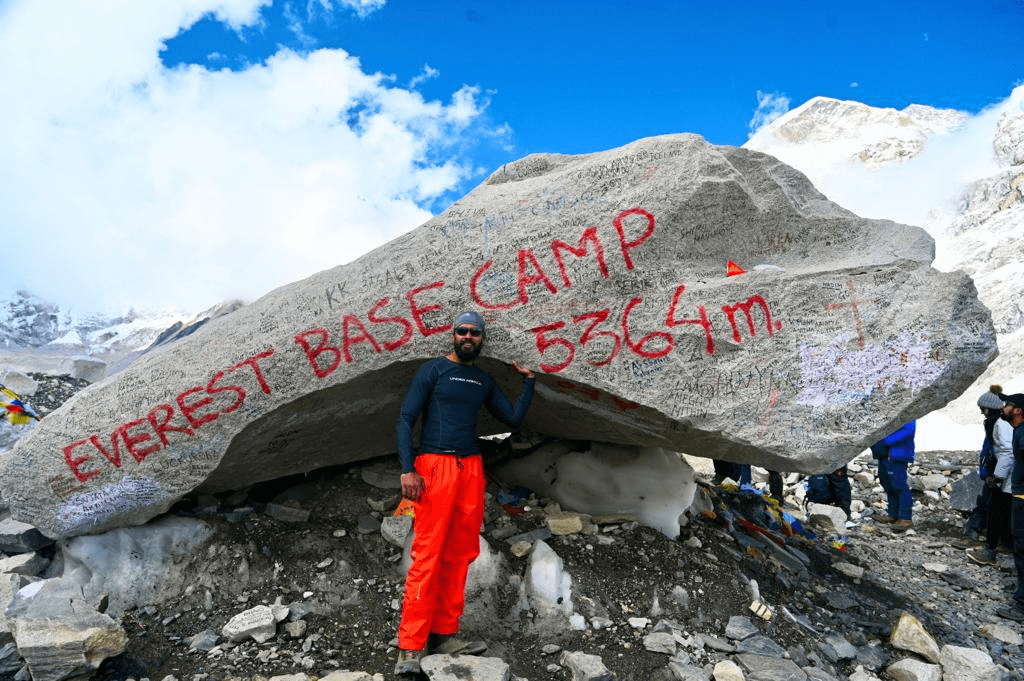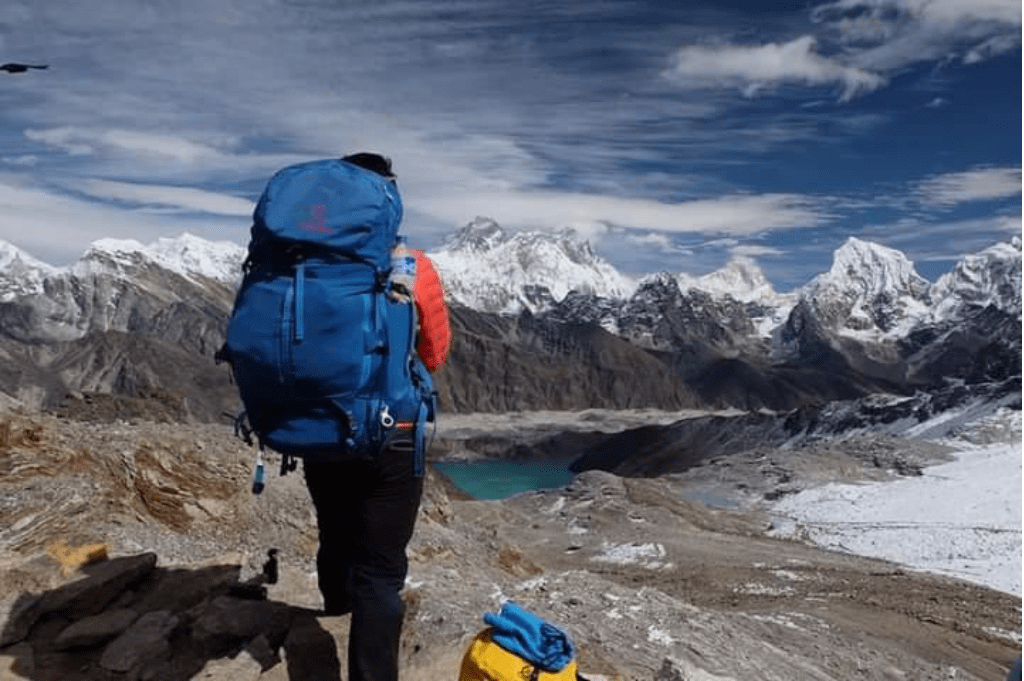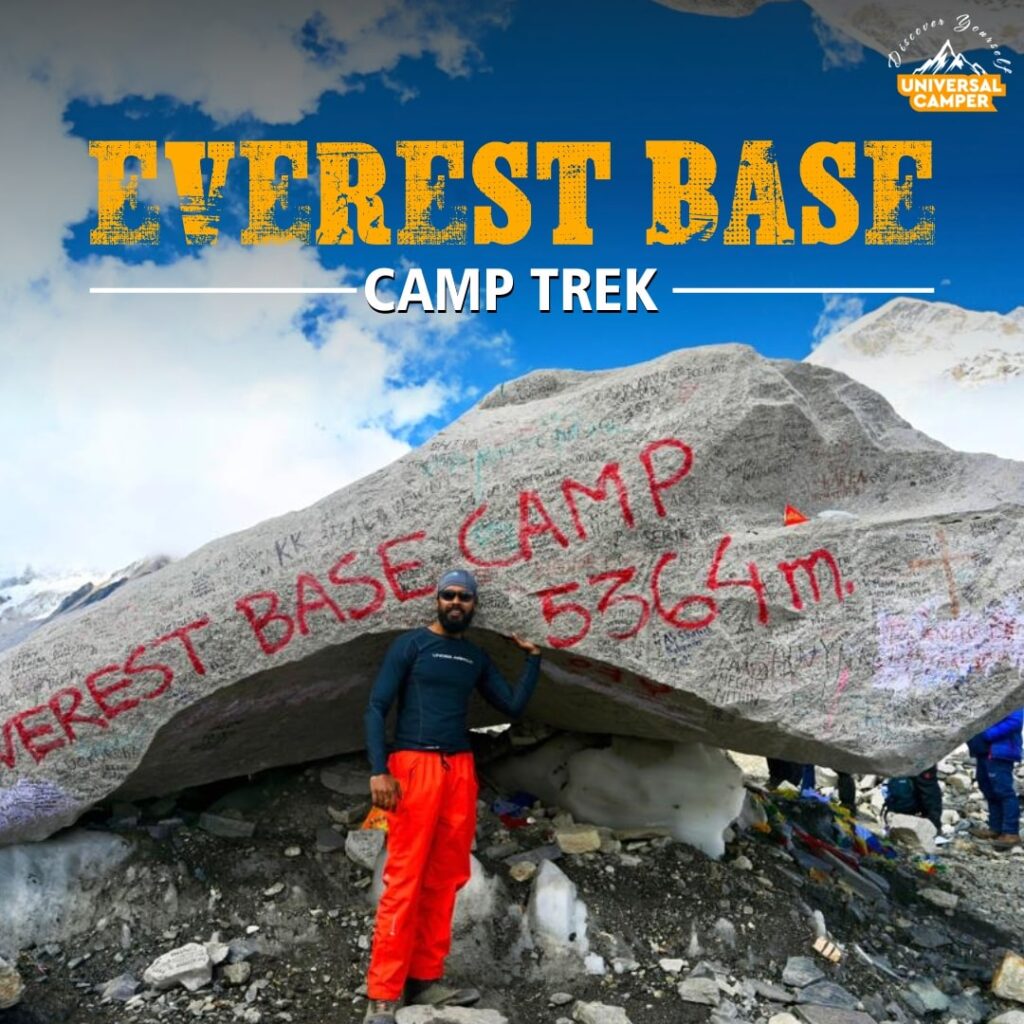Starts @
₹70,000.00
Explore the world with us, one adventure at a time.
Black Peak Expedition
Share On
Package Details
Per Person
₹70,000.00
Dehradun to Dehradun
Duration
15 Days
Location
Sankri
Group Size
20
Age Range
18+
Overview
Standout among the several majestic mountains in the Garhwal Himalayas is Black Peak, the loftiest peak in the Ruinsara Valley’s Saraswati Range. It is 6,287 metres high and breathtakingly beautiful; the locals call it Kalanag because the summit looks so much like the head of a black cobra.
Three peaks make up the Bandarpunch massif, also known as the Saraswati mountain range: White Peak, also known as Bandarpunch II, stands at 6,102 metres, Banderpunch I at 6,316 metres, and Kalanag, also known as Black Peak, at 6,287 metres. As the dominant peak of the Bandarpunch massif, Black Peak is an intimidating prospect for mountaineers due to its structure and the nature of the climbing necessary to reach its summit. Because of its breathtaking setting, Black Peak is surrounded by some of the most revered mountains in the area.
As you go, you will be accompanied by several prominent peaks in the Garhwal range, such as Swargarohini, Bhagirathi Massif, Bandarpunch, and the Gangotri group of mountains. While hiking in Govind National Park, you’ll see a wide variety of landscapes, from alpine meadows and pine forests to moraine ridges, boulders, and glacial basins. The park is famous for its rich flora and animals. In terms of beauty and difficulty, Black Peak is just ideal. The 75-foot-tall ice wall with a 70-degree gradient that you’ll encounter on your ascent to the peak is the most difficult part of what is otherwise a technically challenging trek. The ascent of Black Peak requires familiarity with climbing gear and expertise in altitude survival techniques as one makes their way over crevassed snowfields, glaciers, kilometres of stony moraines, and ever-decreasing air pressure. This excursion is thus only suitable for very experienced climbers. To go on this difficult journey, you must have mountaineering certification or extensive experience hiking at high altitudes in adverse temperatures.
Complete Itinerary
We will pick you up in a vehicle at 6:30 in the morning in Dehradun, which is the starting point of our tour. This is a request that you arrive at the pickup spot at the specified time. Our journey will begin in Dehradun, and we will make our way to Sankri, which is located 220 km away from Dehradun. Sankri might be reached in around eight to nine hours. On the other hand, the route to Sankri is fairly picturesque. The journey will take you to a number of lovely locations, including Mussoorie, Mori, Naitwar, and others. You will go along the Yamuna and Tonnes Rivers, which are both quite lovely rivers, and pine trees will line the route. In certain areas, the River is a milky white colour, while in others, it is a clear green colour. The lengthy journey to Sankri will be compensated for by the captivating aroma of pinewood and the breathtaking scenery of nature. As you reach Govind National Park, which is well-known for being home to a wide variety of exotic flora and animals, the last section of the road, which is around 22 kilometres away from Sankri, becomes even more breathtaking. As soon as we get in Sankri, we will go to report to our hotel. After you have finished getting ready, you are free to enjoy the evening at your own pace in the picturesque village of Sankri.
Due to the fact that there is a variety of terrain to cover, this early day. We should be complete with breakfast at any time between seven and eight in the morning, which will allow us sufficient time to bask in the warmth of the morning sun and take in the splendour of this mountain town before we go for the day at nine in the morning. Following the completion of breakfast and the gathering of our meals for the day, we embarked on our journey towards Seema, which is going to be our first campground on our journey. Despite the fact that we are not gaining a significant amount of height today (just 160 metres from Taluka to Seema), the duration of the trip is by far the most difficult obstacle. The journey begins on level ground, and there is a strong aroma of the forest in the air. The environment is verdant, and there are a half dozen waterfalls scattered throughout the area. Except for the fact that you have to hop over enormous rocks and fallen trees, the terrain is very level. The inclines, on the other hand, are moderate, and all the while, the greyish blue of the tumultuous Supin river follows along like a loving friend. After a 6 hour hike, you should anticipate arriving at the campground no later than six o'clock in the evening. There are rooms accessible throughout the two-kilometer length of the long camping ground that includes rooms with views of the mountains, rooms near the river, rooms on open ground, and rooms in little patches hidden behind trees away from the masses. Choose the spot where you wish to set up your tent and rest your tired body for the night, and be sure to take your selection there.
Ruinsara Tal is a lake that is located at a height of 3,500 metres and is considered holy by the villagers who live in the region. The lake appears vivid blue to the naked eye. Trekkers that are in the Har ki Doon Valley frequent the Ruinsara trip, which is another famous path in the region. Located at a distance of 14 kilometres from Seema, Ruinsara is a mountain that is adorned with the vibrant hues of alpine flora. Swargarohini mountain, which can also be seen from the pathway, is said to have been the path that the Pandavs travelled on their trip to heaven. According to legend, this is the path that they took. Assume that you will arrive at this gorgeous campground by the early evening, and then take some time to relax among the breathtaking scenery.
From Ruinsara Tal, you can see the peak of Black Peak as you go towards Kyarkoti Base Camp. Kyarkoti is a vast expanse of grassland bordered by mountains covered with snow and stones. A spring is next to the campground. We defy you to control the wave of adrenaline that will wash over you as you descend to the foot of this hypnotic mountain. At this point in the journey, you should be able to see your final destination clearly.
While you are in base camp, you will have the opportunity to accomplish a great deal, including the distribution and setting up of all of the equipment, as well as technical training and practice on the icy slopes. On the other hand, before that happens, you have the full day to relax your bodies and adjust to the climate, landscape, and altitude of the base camp, which is located at 3,820 metres above sea level. This represents a height rise of nearly 2000 metres from Sankri, the settlement where everything started!
Due to the unpredictability of high-altitude circumstances, plans are constantly being revised to accommodate the current scenario. Therefore, it is difficult to provide set timetables for each day. Standard acclimatisation procedures for high-altitude excursions involve rotating between camps, which is essentially included into the timetable. After the base camp, there are three further camps on Black Peak: Advanced Base Camp (4,600 m), Camp 1 (5,100 m), and Summit Camp (5,500 m). Because of the need of a strict acclimatisation regimen for ascents to high altitudes, expeditions often use the strategy of camp rotation to better adapt to the environment. The best guideline for survival at that height is "climb high, sleep low," so we follow that principle and walk back and forth between campsites. In particular, we do two passes through Black Peak. In the first, we move our belongings to the next camp, drop them off, and then return to the lower campground for the night. We return to the campground the next day and set up tents to live there after leaving our belongings there. This accomplishes three goals at once. To avoid carrying too much on a single journey, spread out your weight across two days. Secondly, by not forcing the organism to adapt too quickly, it provides it more time to adjust to the higher altitude environment, increasing the likelihood that it will survive. Thirdly, when your technique, competence, and adaptability are refined with each ascent of the same route, it becomes simpler and easier.
Proper acclimatisation, rotation rounds, rest days, and the option of two summit attempts in inclement weather will be included during the whole trip. Reaching Advanced Base Camp (4600M) from Base Camp (3,820M): The ascent from Base Camp to Advanced Base Camp is somewhat steep, but it serves as an excellent first climb to familiarise oneself with the peak's slopes and landscape. The route begins in grasslands, continues across a bouldery portion, and then climbs steeply past a small landslide-prone stretch, into moraine-rich ground, and finally onto a glacier. Estimated time for the climb: four to five hours.
Starting at Advanced Base Camp (4,600M) and continuing to Camp 1 (5,100M): Moraines, glaciers, and ice make up the landscape, much like the one we left yesterday. The second time around, you'll start to notice that things are simpler. From Camp 1 (5,100M) to Summit Camp (5,500M): We have now entered a landscape ripe with open and concealed crevasses, while to the north we can see the towering Swargarohini and to the south, Bandarpooch. To reach the pinnacle, you must gradually adjust to the surrounding environment, terrain, and obstacles. Early in the morning, we set out for the summit, which is 6,387 metres higher than Summit Camp, which is 5,500 metres higher. As a result, the nighttime chill and strong gusts from above provide an obvious obstacle. Getting to the peak is no easy feat; you'll have to make your way up 75-85 foot sheer ice cliffs with gradients of 70 to 75 degrees. In order to reach the ridgeline, we will need to climb these portions using fixed ropes and jumars. The peak of Black Peak is relatively level, in contrast to its severe slopes. We plan to summit this breathtaking mountain in seven or eight hours and begin our descent immediately thereafter to reach the safety of our tents before the snow becomes too unstable to climb. Be very careful on the descent, as descends are often more vicious than ascends. Starting on Day 10, we will make our first summit attempt. By Day 11, we intend to reach Base Camp. By Day 12, we will reach Ruinsara Tal. By Day 13, we will reach Seema. By Day 14, we will be driving back to Sankri, our trail start.
The day that marks the end of the trekking has finally arrived. A lengthy journey awaits you between Sankri and Dehradun, and then on to your final destinations. The travel to Dehradun will take you ten hours, and you will be there till the evening. The journey, on the other hand, is quite picturesque as it passes through a variety of stunning forests and landscapes.
Inclusion & Exclusion
Transportation between Dehradun to Dehradun, beginning with pick-up on Day 1 and ending with drop on last day.
Every meal is vegetarian (sometimes eggs will also be served), beginning with breakfast on day one and continuing through lunch on last day.
Staff consisting of a professional guide, a chef, and support team.
Equipment for camping, such as stools, toilet seats, and other seats, sleeping bags, crampons
Fees required to enter the forest.
Tented accommodation throughout the trek, with guests sharing tents in twin-person ratios.
Medical kits
All necessary permits
Insurance
Support from a porter and a mule to carry one’s personal belongings. Porter/mule costs for personal baggage* per bag per person INR 300 per day.
GST 5%
Transportation from your hometown to Dehradun and back
Personal costs like tips, foods from stalls, phone calls, etc.
Any costs that are incurred as a result of unanticipated occurrences such as adverse weather, obstacles, medical evacuation, etc.
Things to Carry
Government issues Id Card
Backpack
Headlamp
Sunglasses
Rain gears
Bag rain cover
Woolen and Sun cap
Buff
Thermals
T-shits
Personal first aid kit and medicines
Waterproof Trekking shoes (can be available for rent also*)
Fleece and Down Jacket
Waterproof gloves
Trek pants
Warm socks
Water bottle
Sunscreen and body lotion
Lip balm
Person Toiletries
Sanitizer
Power Bank
Glucose
Chocolates
Tissue paper and Wet Wipes
FAQ's
The best time to visit or book black peak expedition package is April to June and September to November.
Black peak expedition is suitable for both beginners and experienced trekkers. Any age group from 18 to 60 is good to apply for a first-time trekking experience. Adults and seniors should carry doctors' notes for their fitness requirements for the journey. They should be fit enough to cover a 4 km distance in 30 minutes and should be able to carry at least a 10 kg backpack.
Temperature is generally between 10-30 degree Celsius in day time and 2 to -10 degree Celsius in night time.
Why Choose Us
➫ Safety
➫ Expert Team
➫ Comfort Stay
➫ Customized Trekking
➫ Cooked and Hygienic Food
➫ Value for Money
Package Details
Per Person
₹70,000.00
Dehradun to Dehradun















